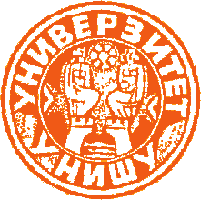ANAESTHETICS. Heidegger and the Overcoming of Aestetics
ANAESTHETICS. Heidegger and the Overcoming of Aestetics
Author(s): Vladimir ĐokićSubject(s): Philosophy
Published by: Универзитет у Нишу
Keywords: Martin Heidegger;
Summary/Abstract: Traditionally, art has been defined as essentially mimetic. Indeed, making things ever more complicated, mimesis (as a difference between the original and the copy) is constitutive of the very possibility of philosophy as thinking of (ontological) difference as a difference between Being and beings - origin, ground, principle, idea, on the one hand; and being, appearance, etc., on the other. In his project of overcoming aesthetics or what I call, recalling the movement back (ANA) or against (A), 'anaesthetics.' Heidegger tries to rethink art without recourse to the traditional determination of art as mimesis but, instead, in terms of his conception of truth which itself already attempts to exclude the mimetic dimension of the traditional conception of truth as agreement. I attempt to demonstrate that by so radically excluding mimesis Heidegger reaffirms it. More concretely, in his efforts at thinking Being as such, in its properness and purity, Heidegger re-inscribes (translates, mimetizes) a properly metaphysical gesture of identification which, by necessarily passing through and always already appropriated and indifferent Other, re-establishes the well-known subordinations and hierarchies. And all this, on a 'textual level,' through a constant (yet unaddressed and unacknowledged) recourse to tropes and metaphores, illustrations and analogies - in a word, 'mimesis'. He thus - as if aneasthesized - falls victim to his own (an)aesthetics.
Journal: FACTA UNIVERSITATIS - Philosophy, Sociology, Psychology and History
- Issue Year: 2001
- Issue No: 08
- Page Range: 569-592
- Page Count: 24
- Language: English

